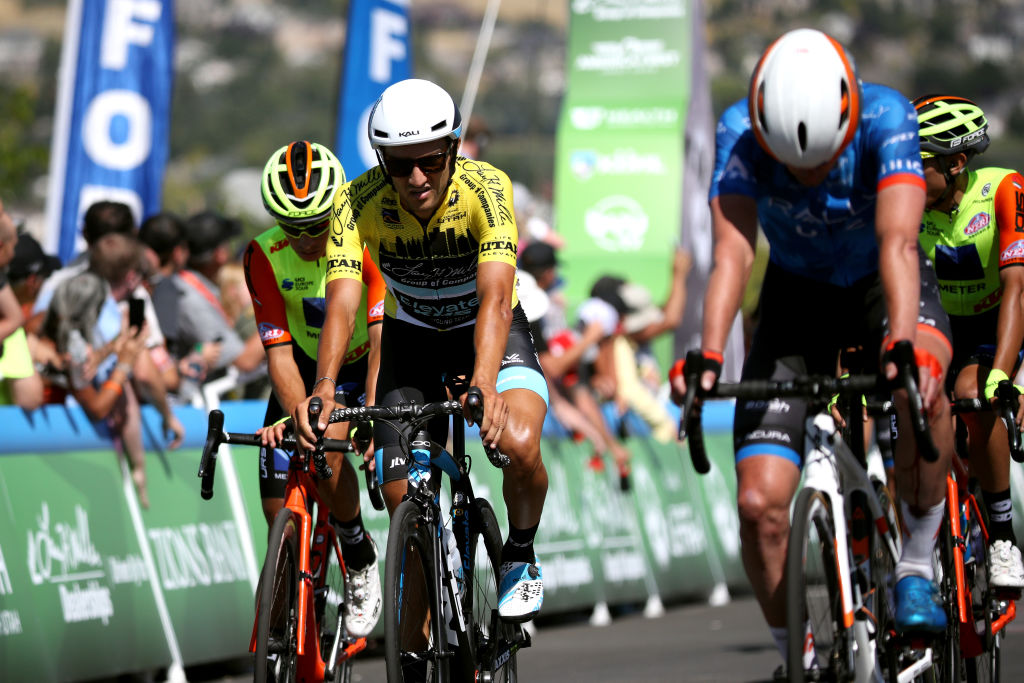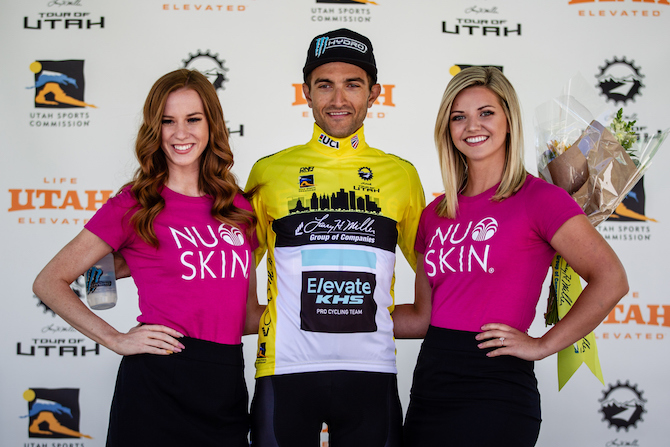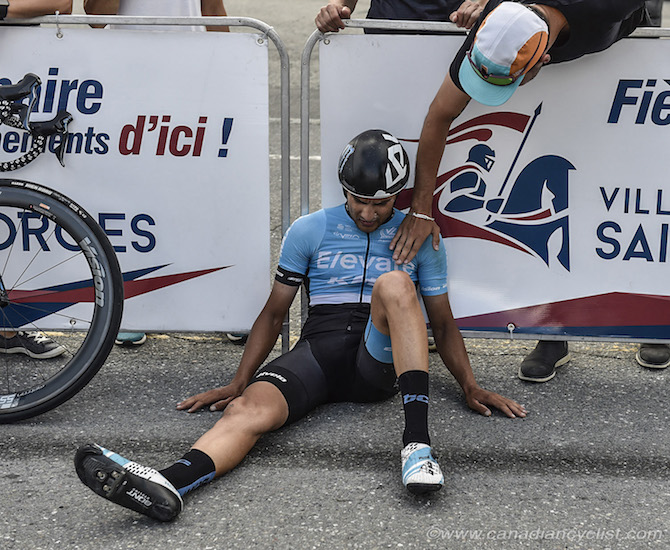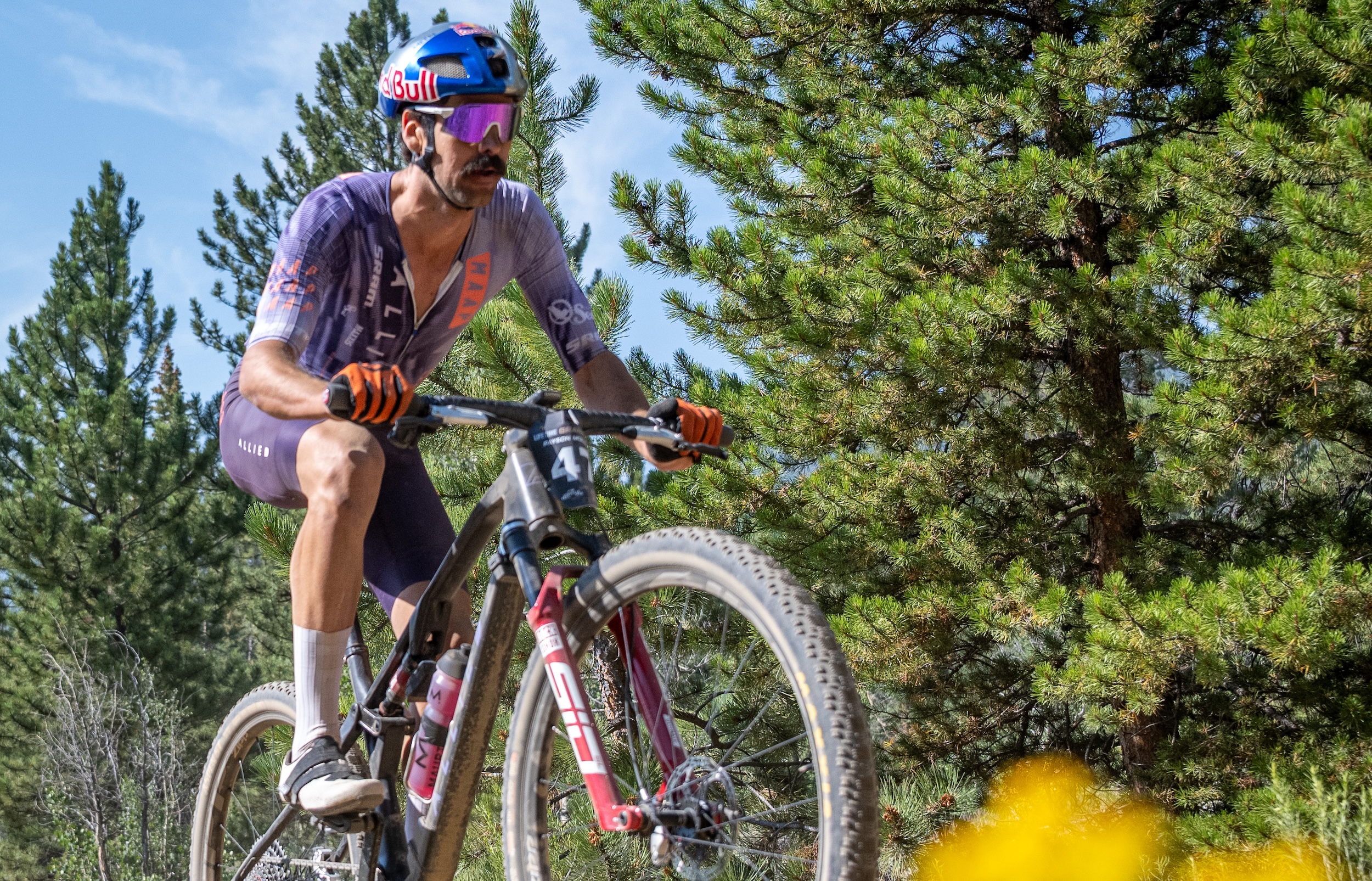Tour of Utah: Polemics over motorpacing spill over from California with Piccoli's penalty
'I think every director in my case would have done the exact same thing' says Elevate KHS manager



The UCI commissaires at the Tour of Utah denied the protest Elevate-KHS filed over the 20-second time penalty given to James Piccoli for motorpacing behind his team car to regain the race caravan after suffering a puncture inside 10km to go.
Lefevere slams 'incompetent' Tour of California race jury after van Garderen decision
Van Garderen decision remains controversial with Tour of California peloton
Tour of Utah: Piccoli wins prologue at Snowbird
Piccoli looking for Tour of Utah result to top off 'dream season'
Piccoli finds new life at Elevate-KHS
Piccoli, who was in yellow at the time, lost the jersey to Lawson Craddock (EF Education First) by six seconds on the stage and sat second overall until the commissaires added a 20-second penalty, knocking him to 13th at 26 seconds back.
After puncturing, Piccoli motorpaced behind the Elevate-KHS vehicle to the back of the caravan, where team manager Paul Abram dropped him off to work his way back to the field. Piccoli regained the field before the finish, but he was unable to cover a late attack from Craddock.
Elevate-KHS protested the penalty, saying their actions to get Piccoli back to the caravan were not out of the ordinary or extreme and not deserving of a penalty.
Kurt Sauer, president of the Commissaire Panel, told Abrams the panel denied the protest because Piccoli clearly violated the rules.
"The rule is pretty clear about pacing, and the video you sent me actually reinforced even stronger with the panel that the riders were in fact pacing very closely," Sauer told Abrams during a meeting in the team parking lot before the start of stage 2 in Brigham City.
"Think about it, Sauer said. "The yellow jersey went through the finish line about a centimeter off the bumper of a team car. Think of the optics of that."
The latest race content, interviews, features, reviews and expert buying guides, direct to your inbox!
Abrams responded that he did not care about the "optics' involved, rather he was concerned about the consistency of the UCi judge's rulings.
"I got about 10 responses from [other team] directors last night, and they all said, 'We would have done exactly the same thing," Abrams told Sauer.
"I never overtook another car. I understand your concern with optics. My concern is with clarity of the rules. If you look at California this year, a very similar thing happened, and a very different ruling was made," Abrams said. "I would just like there to be a very clear understanding if one race is one set of officials, and then we come to a different race and there's a different group of officials and a different set of rules. So I would just like some parity and not have it feel like it's dependent on optics."
Sauer replied that "optics" involved were Piccoli's time on camera while motorpacing and riding through the start/finish line on his team car's bumper.
"What I'm saying to you is that from an optics point of view, it's clearly recorded and people would see it," Sauer said. "But regardless of whether people saw it or not, my referee saw it, and it is clearly a violation of the rule. The rule I have is actually relatively inflexible if you want to take a look at it. You got the minimum penalty possible."
Abrams again asked for consistency from the officiating.
"As long as it's standard across the whole entire race every single day and it's completely fair on every single race, I have no problem," The Elevatye-KHS manager said.
Sauer countered that he cannot control what happens at other UCI races.
"What I'm telling you is this is how I'm interpreting this rule, and it's based on the guidance I get from the UCI," Sauer said. "Especially in the last 10k of a race. The rules say especially of the last 10k."
Abrams used the example of the UCI jury's decision at the Tour of California to allow Tejay van Garderen (EF Education First) to keep yellow despite crashing outside the 3km line and motorpacing behind his team car to regain the bunch.
"If you look at California this year, a very similar thing happened with a very different ruling," Abrams said. "Tejay was behind his car for multiple kilometres in the last 10k, and nothing happened."
Sauer assured Abrams that if a similar thing happened this week in Utah, it would result in a similar penalty as Piccoli's
"I wasn't at California, but I can tell you if that happens at the next race or the last race, that doesn't have anything to do with this race," he said.
In a last gasp at persuasion, Abrams repeated that he didn't pass any other team cars with Piccoli on his wheel, and he didn't advance him into the bunch.
"I understand that," Sauer said. "If you had done that the penalty would have been worse."
Abrams closed with a simple declarative statement.
"I think every director in my case would have done the exact same thing," he said.
Looking for consistency
The directors Cyclingnews spoke with at the start of stage 2 said it didn't appear to believe Elevate-KHS and Piccoli did anything out of the ordinary. Most of all, they appealed for consistency among the UCI jurys' rulings from race to race and situation to situation.
"They motorpaced three guys, not just one guy," said Wildlife Generation manager Danny Van Haute. "But is it normal. Again, every race is different. Every official is different, and that's been my complaint for the last 10 years. Every time we go to a race there are different officials, and every official has a different opinion. And so we just need to find that out at the beginning of the race. And now I know they're going to call it pretty strictly here at the Tour of Utah."
Van Haute said team directors and managers just want consistency from race to race.
"And from team to team," he added. "Paul had a good point. Sometimes it seems like there are teams where they let things go by, and then the other teams they don't. We're all really good friends with the officials. We know them. We just want a little consistency. I think that's in every sport. We just need consistency. That's all."
Rally UHC director Pat McCarty said he had full confidence Abrams and Piccoli did everything correctly, but he said the penalty was still a tough situation.
"As a former rider and now director, I feel for those guys," McCarty said. "That's a bad way to lose time. I didn't see exactly how Paul handled it, but I imagine he did everything within the norms. Nothing crazy. No big bottle swings. I imagine it was as on the up-and-up as any other director would have done for their guy in the yellow jersey."
But McCarty said he can also understand the officials' perspective.
"They've made it very, very clear to teams at every race and every directors' meeting, that there are two things, littering and the image of cycling where people are hanging on the cars, drafting, those things are going to be cut out and it's going to be done with heavy, heavy fines. And they've told us that.
"On the sporting side, I'm sure that Paul and James did everything within the sort of gray area rules of cycling that any other rider and director would have done," McCarty said. "I certainly don't think that fine and penalty reflect any wrongdoing on their part. I think it just reflects a set of circumstances that the sport itself needs to iron out where they stand."
EF Education First director Fabrizio Guidi, said that because he was driving car 1 in the race caravan, he did not see Piccoli drafting behind the team car to make contact, but he did see a very strong Piccoli put in a deep effort to get back in the race.
"I could just see him coming back by himself and with a teammate," Guidi told Cyclingnews. "So actually I don't know. For me, from what I saw, I was first car, he did everything alone. It was a deep effort, and it was really strong to be back because that was a really bad moment. I don't know if it was outside the cars, but if you take the caravan it's pretty normal when all the cars are in line.
"What I saw was everything correct," Guidi said. "There was a line of cars and he was going inside outside, but after the crash or flat tires that's fair enough, and it's always like this."
Growing up in Missoula, Montana, Pat competed in his first bike race in 1985 at Flathead Lake. He studied English and journalism at the University of Oregon and has covered North American cycling extensively since 2009, as well as racing and teams in Europe and South America. Pat currently lives in the US outside of Portland, Oregon, with his imaginary dog Rusty.
